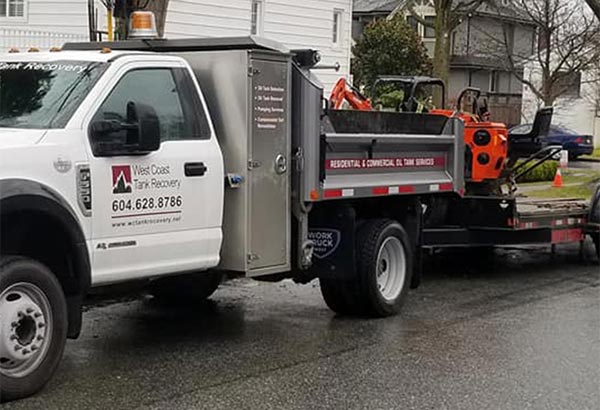 Fully Licensed and Insured
Fully Licensed and Insured Request an Oil Tank Scan
Request an Oil Tank Scan Request a Free Estimate
Request a Free Estimate

There are a number of steps involved in the oil tank detection and removal procedure. If you suspect an oil tank is buried on your property, you have to hire specialists to deal with it. However, it is important to know the methods that these experts follow in adopting the procedure. There are four major steps involved in, they are Detection, Removal, Disposal and Backfill.
Detection: Professional oil tank removal companies in Vancouver deal with underground oil tanks, above ground oil tanks, fuel tanks, gasoline tanks and so on. Using the latest detection technology, expert oil tank detection service providers scan the ground and locate the tank. They often use various ground scanning methods like GPR scanning (radar) and M-Scope scanning to locate the exact area of these tanks.
Removal: Once an oil tank is detected, the next step is to remove it safely. Removing hidden oil tanks need special skills. Tank removal experts use environmentally sensitive ways and safe methods while removing the tanks. They remove any residual or leaking oil, the contaminated soil and sludge from the area, and refer to a certified environmental engineer for soil testing.
Disposal: Disposing of the metal is as important as the detecting and removal of oil tanks. Professional tank removal and disposal experts cut, clean and recycle the metal to dispose of it at authorized recycling facilities.
It is important to backfill the site after removing an oil tank. Companies offering these tank detection and removal services also backfill the soil.